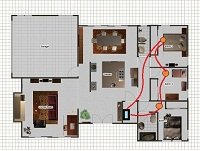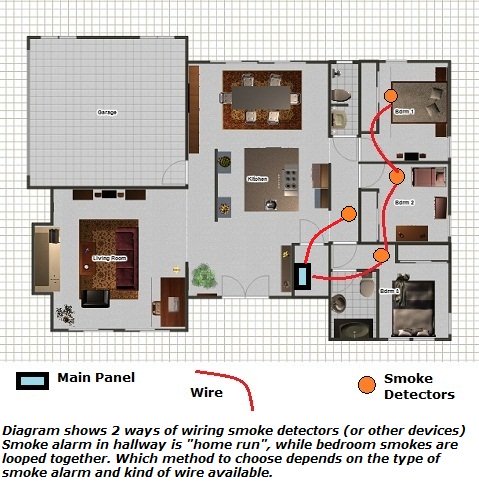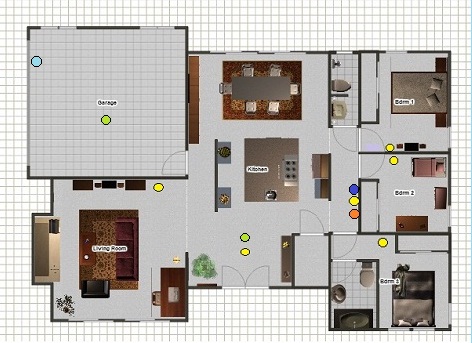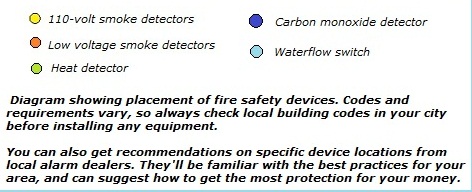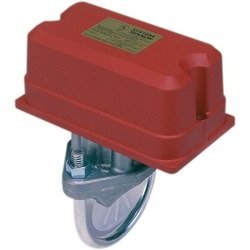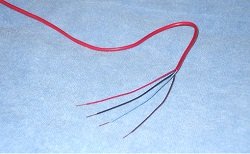- Home
- Compare Systems
- Cheap Systems
- Free Quotes
- DIY Systems
- Hardwired Systems
- Wireless Systems
- Smoke Detectors
- Medical Alarms
- Alarm Monitoring
- Cameras & Video
- Ademco
- ADT Security
- Brinks Security
- Broadview
- DSC Security
- FBI Alarms
- GE Security
- Honeywell
- Link Interactive
- Monitronics
- Moose
- Napco
- Protection 1
- Radionics
- Simplisafe
- Alarm Manuals
- Alarm System Parts
- Alarm Tools
- Troubleshooting
- FAQ
- Glossary
- Sitemap
- About Me
- Contact Me
Why You Should Add Fire Alarm Wiring
For More Complete Home Security
Insurance Discounts
Fire alarm wiring is one area you shouldn't pinch pennies on. Adding a hard-wired smoke detector or two to a monitored security system will entitle you to a 10%-20% discount with most homeowners’ insurance companies. This not only helps offset the cost of home alarm system monitoring, but it gives you extra peace of mind when you’re away from home.
If you haven't done so already, get a few Free Home Security Systems Quotes from companies in your area. This will give you a good idea of what a system would cost to have installed, as well as how much you could save by doing it yourself.
Many insurance carriers are now requiring a monitored fire alarm on larger homes before they will even insure them. Wiring for a fire alarm could actually save you money in the long run.
Most homes built these days are required to have the standard 110-volt smoke detectors installed. These are great, and have saved many lives, but they only sound a warning inside the house.
Low-voltage smoke alarms that connect to a home security system can send a signal to a central monitoring station. Operators there can then dispatch the fire department, potentially saving your house and possessions.
Even if you have no plans to install smoke alarms connected to your security system, consider running smoke detector wiring anyway.
Why? Several good reasons:
- Wiring costs relatively little, especially if you’re pre-wiring a new house
- Wiring for fire protection gives you options in the future
- Fire alarm wiring can be a selling point if you move
For existing homes without access to run fire wiring, you can use wireless smoke alarms. One of the best options is the OneLink feature available from First Alert.
OneLink smoke alarms connect to each other over their own wireless mesh network, eliminating the need for wires.
For more information, see this page on First Alert Smoke Detectors
Here are the fire safety products that I would recommend, along with the type of wiring needed for each one:
- Smoke detectors
- Carbon monoxide (CO) detectors
- Heat detectors
- Waterflow alarms, for homes with fire sprinklers
Smoke detectors should be prewired with 4-conductor fire wire. 4-wire smoke alarms require 4-conductor cable, using 2 wires for power and 2 more for the alarm loop.
Ionization and photoelectric smoke alarms are both available in 2- and 4-wire versions, as are combination ionization and photoelectric units. Wiring with 4-conductor means you can use any type of fire alarm you choose, now or in the future.
2-wire smoke detectors don’t need 4-conductor wiring, but it’s a good practice to run it anyway.
In either case, multiple smoke detectors can be looped together on the same run of fire wiring.
Carbon monoxide detectors require 4-conductor fire wire, and can also be looped with each other. It’s best not to loop smoke alarm wiring and CO detectors on the same run, if it can be avoided.
Heat detectors are similar to smoke alarms, but only respond to very high or rapidly changing temperature levels. Dust and vapors don’t affect them, so they can be installed in many places where smoke detectors cannot.
Kitchens, furnace rooms, attics, and utility closets are useful locations for heat detectors. These same areas can wreak havoc on a smoke alarm!
Heat detectors should be connected using the same fire alarm wiring as smoke alarms, 4-conductor fire wire.
Waterflow alarms are actually just switches that respond to water moving through the sprinkler pipe. If your home has a fire sprinkler system, you should definitely consider connecting a water flow switch to your alarm system. Use 4-conductor fire wire, just like a smoke or heat detector.
Why should you connect the water flow switch to the alarm system?
A standard sprinkler installation will activate a bell on the outside of the house if the sprinklers are triggered, which alerts anyone near the house of a problem. This is great, as long as someone hears it. If you’re not at home and no neighbor takes action, the best you can hope for is that the sprinklers extinguish a fire.

Wiring a connection to the alarm panel will also send a signal to the central station, causing the fire department to be dispatched. This ensures that a fire won’t spread out of control. It also means that sprinklers won’t run unchecked, possibly for days. Sprinklers are capable of flooding an entire house, sometimes causing even more damage than the fire itself.
Mounting fire alarm devices
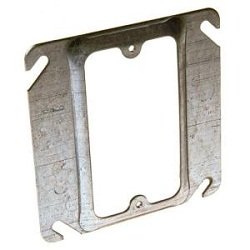
All smoke, heat, and CO detectors are designed to be mounted to a standard single-gang box or ring. Install the ring or box in the desired location, and coil or staple the fire alarm wiring up behind the ring or inside the box. Leave 2-3 feet of wire length, to make connections easier.
Waterflow switches are installed at the fire riser, which is the main sprinkler pipe entering the house. This is often located inside the wall in the garage or utility room, and is accessed through a small hinged door.
Waterflow alarm switches mount in special enclosures attached to the fire riser, and fire alarm wiring should be run into this enclosure for connection to the switch.
Types of Fire Alarm Wiring
Fire wiring for home alarm use is 22AWG to 18AWG, 2- or 4-conductor copper. Solid or stranded are both acceptable.
Telephone connections can use Cat-3 phone wiring, or Cat-5/Cat-5e phone/data cable.
Shop for alarm wire and Cat-5 cable at Amazon.com.
Related Articles:
Smoke Detector Wiring
Smoke Alarm Wiring - Connecting Multiple Runs
Alarm System Wiring for the Main Control Panel
Burglar Alarm Wiring for Securing Doors
Burglar Alarm Wire for Protecting Windows
How to Run Motion Detector Wiring
Alarm Wiring for Glassbreak Sensors
Smoke Detector Circuit Basics - Device Connections
Return to Home-Security-Systems-Answers from Fire Alarm Wiring
Return to Hardwired Home Security Systems from Fire Alarm Wiring
Return to DIY Home Security Systems
Note: Feel free to print any of the articles on this site for personal, non-commercial use. Just look for this button:
If you found this website especially helpful, you might want to consider making a small donation. Since 2011, AzAlarmGuy has been providing free help and advice on home security systems to all of those in need.
Your gift, in any amount, will help me keep this website a free resource for anyone needing help with alarm system issues or questions.
Disclosure
I receive affiliate commissions from some of the companies and products I discuss. These commissions don't change the price that you pay.
Rest assured that this compensation does not influence my recommendations. I only endorse products and services that I truly believe to be an honest value for you, as a visitor to my site.
For more details, see my full disclaimer.
